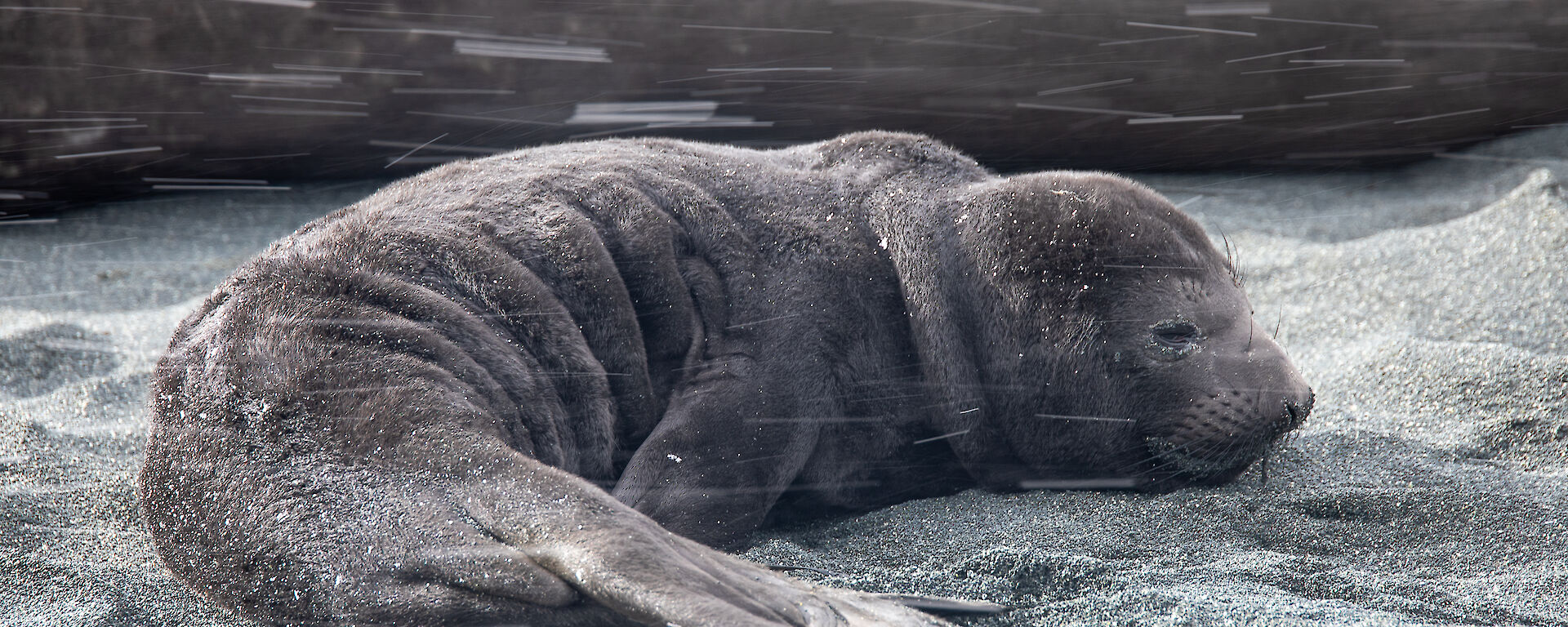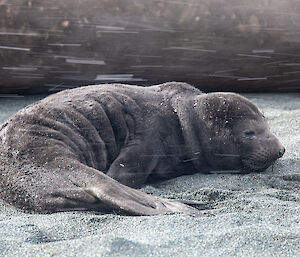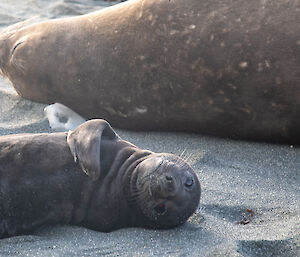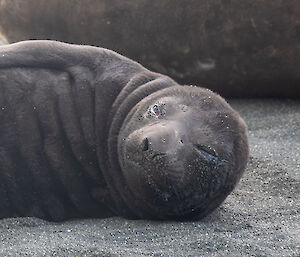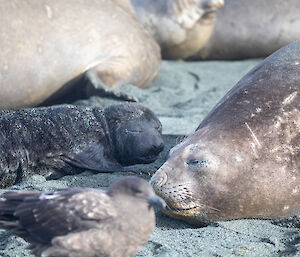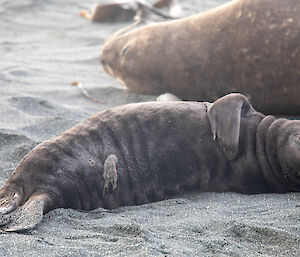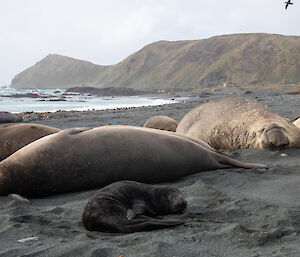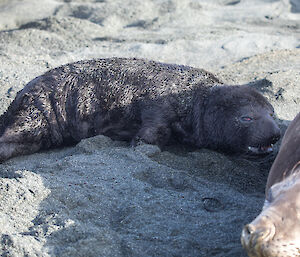It is a magical time of year at Macquarie Island, this week bearing witness to the first southern elephant seal (Mirounga leonina) pup born on the isthmus. It is a pivotal threshold to cross, the inexorable tug towards the teeming life, aroma and cacophony of a Macquarie Island summer. The pup was born to a mid-sized female in a harem of 16. This event was awaited eagerly by all on station, with daily beach scouring for the preceding week. In many ways, the spectacle of an elephant seal breeding season on the island is a miracle. The resident seal populations were hunted to near-extinction in the early 1900s, to fuel the demand for seal ‘harness oil’; a treatment for shoes and other leather products. Even now, global numbers are starting to drop at two of three primary breeding sites. Evidence suggests this is due to a dwindling food supply, perhaps as a result of increased fishing in sub-Antarctic waters (Perrin, Wursig & Thewissen 2002).
Interestingly, from a taxonomic perspective the genus Mirounga is an unidentified Australian Aboriginal language word for elephant seal (Gray 1827). This corroborates with evidence that a southern elephant seal colony once existed on the Tasmanian mainland. The species name leonina was attributed by the Swedish ‘father of taxonomy’ Carl Linnaeus in his 1758 edition of the iconic Systema Naturae. Ironically, it means ‘lion-like’ as opposed to ‘elephant-like’. The species distribution falls over three primary sub-groups. The largest, in the south Atlantic, holds roughly 400,000 individuals on islands such as South Georgia and the Malvinas (Falklands). The south Indian Ocean population numbers 200,000 on the Kerguelen and Heard islands amongst others. Finally, the southern Pacific subpopulation numbers roughly 75,000 individuals, many of which are found here in our temporary home.
The southern elephant seal is an incredible animal. Incomprehensibly bulky and awkward on land, they are truly masters of the aquatic environment. Able to withstand the pressures of dives of up to 1,000 metres, they spend only minutes at the surface before diving again. The record depth recorded for an elephant seal dive was 2,388 metres, the deepest for any non-cetatean air-breather (Gregory et al. 2014). They dive primarily for several species of squid, but will also predate upon lanternfish, krill, and even algae. Another record breaking feature of M. leonine is its sexual dimorphism. This characteristic - the difference between the size of males and females – is one of the highest of the animal kingdom. Males routinely weigh five to six times more than the females, which hints at the highly competitive nature of their dominance hierarchy and harem structure. The largest ever recorded male elephant seal was weighed at roughly five tonnes (Carwardine 2008), although a typical dominant male ‘beach master’ will reach four. It is incredible to think that our 40 kilogram pup may one day grow to be such a behemoth.
On its birthday, our pup bonded with its mother over a good chat. Pups will bark at their mothers, which respond with high-pitched moans (Boyn et al. 2011). This vocalisation process forms quick bonds and associations which reinforce the 23 day lactation period. In this time, the pup will gain around 80 kilograms, while the mother will fast. At that point, the first forays into its aquatic home will commence. This period can be highly dangerous for the pups; Orca (Orcinas orca), leopard seals (Hydrurga leptonyx), sub-Antarctic skua (Stercorarius antarcticus), and giant petrels (Macronectes giganteus) all predate upon the young ‘weaners’ in the water and on land. Weaners are also an inquisitive bunch, and the ‘human zoo’ of the station surrounds routinely becomes overrun with pups. The excitement on station is palpable, and we take this sign as a promise of new and exciting things to come. Happy birthday pup, and long may you return here.
Alexander Velasco, Environment Officer

